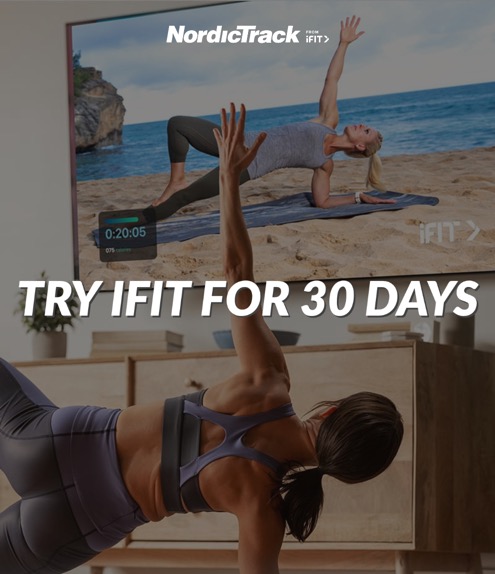Updated 08/28/2025

Running may feel natural, but how you run can impact your performance, comfort, and results. This beginner’s running guide will help you understand proper form, technique, and step-by-step guidance so you can enjoy every mile with confidence.
So read on and learn how to embrace the journey, stay consistent, and enjoy the transformative power of running.
Why Do I Need A Running Guide?
Starting a running routine can feel overwhelming, but a beginner’s guide gives you a clear path forward. Instead of guessing where to begin, you’ll learn the basics that matter most — from proper posture and breathing to stride and arm movement.
Think of it as having a trusted coach by your side, helping you avoid common mistakes and build confidence step by step. With the right foundation, running becomes more than just putting one foot in front of the other — it’s about moving efficiently, staying injury-free, and actually enjoying the journey.
Lace up, follow the plan, and let your beginner’s guide to running turn those first miles into the start of something sustainable and exciting.
For more tips on how to start running, read here next!
What to Expect When You First Start Running
Starting your running journey is exciting, but it also comes with adjustments — both physical and mental. Here’s what you can expect in those early weeks:
- Muscle Soreness: It’s normal to feel tightness or soreness as your body adapts to new movement. This is part of the process of getting stronger. Gentle active recovery — like walking, stretching, or yoga — can help reduce stiffness. Explore guided recovery sessions on iFIT to support your training days.
- Fatigue: Running is demanding at first, and you may feel more tired than expected. Prioritize quality sleep and balanced nutrition to help your body recover and sustain energy.
- Gradual Progress: Don’t expect instant speed or endurance gains. Running improvement takes time, and progress often comes in small, steady steps. Consistency matters more than pace.
- Mental Hurdles: Some runs will feel harder mentally than physically. Doubt is normal, but overcoming these moments builds confidence and resilience. If motivation dips, check out our guide on how to get motivated to work out.
- Setting S.M.A.R.T. Goals: Begin with small, achievable milestones. Using the S.M.A.R.T. framework (Specific, Measurable, Achievable, Relevant, Time-bound) helps you stay focused and motivated as your running ability grows.
What Is the Proper Technique for Running?

Proper running technique is one of the most important foundations for beginners. Good form helps reduce your risk of injury, improves efficiency, and makes it easier to build distance and speed over time1.
Running is a full-body movement, not just a lower-body workout. Pay attention to posture, breathing, and arm drive. Keep your chest open, shoulders relaxed, and arms swinging naturally forward instead of crossing your body. Aim for a light, mid-foot strike with knees slightly bent to absorb impact2.
With consistent practice, proper technique helps you feel stronger, stay comfortable, and enjoy every run more.
How to Run Step-by-Step
Good running form helps you move efficiently, reduce injury risk, and enjoy every mile. Use this step-by-step beginner’s guide as your foundation:
- Warm Up
Begin with a 5-minute walk at a comfortable pace. This prepares your muscles, joints, and cardiovascular system for the workout ahead.
- Focus on Foot Strike
Aim for a light mid-foot landing directly under your hips. This reduces impact, helps you avoid overstriding, and creates a smoother stride3.
- Maintain Proper Posture
Run tall with your head up, shoulders relaxed, and back straight. Avoid hunching forward or leaning too far back4.
- Find a Breathing Rhythm
Breathe deeply from your diaphragm, not your chest. A simple 2:2 pattern (inhale for two steps, exhale for two steps) can help maintain steady oxygen flow5.
- Use Your Arms Efficiently
Keep your elbows bent at about 90 degrees and swing your arms forward and back — not across your body. Relax your hands and let your arms help drive momentum6.
- Cool Down
End with a 5-minute walk to bring your heart rate down gradually and reduce muscle stiffness. Think of this as the reset button for your body.
Want expert coaching on your runs? Explore guided workouts from iFIT Trainer Knox Robinson here!
Remember, running form doesn’t become perfect overnight. Stay consistent, be patient, and focus on small improvements. Over time, these fundamentals will become second nature.
Running Guide to Lose Weight as a Beginner
If your goal is weight loss, running can be a powerful tool. Research shows that incorporating interval training — alternating between higher-intensity bursts and recovery periods — can increase calorie burn and fat utilization compared to steady-pace cardio7. Even short interval sessions a few times a week can make a difference when paired with consistency.
But remember, running isn’t just about the scale. It’s about building strength, improving cardiovascular health, and creating sustainable habits. Focus on setting realistic goals, such as completing your first mile without stopping or running three days a week. Celebrate those milestones, and the results will follow.
To make running for weight loss more enjoyable, try combining treadmill intervals with iFIT’s guided programs. You’ll stay motivated with trainer-led coaching, structured progression, and scenic routes that keep every session engaging.
How Far Should Beginners Run?
When you’re just starting out, distance isn’t the most important number — consistency is. A great way to begin is by using run-walk intervals. For example, jog for 1–2 minutes, then walk for the same amount of time. Repeat this cycle for 20–30 minutes, depending on your comfort level.
As your fitness improves, you can gradually extend the running segments and shorten the walking breaks8. Over time, you’ll notice your endurance building without feeling overwhelmed.
A helpful guideline for progression is the 10% rule: avoid increasing your total weekly mileage by more than 10% from the previous week9. This simple approach helps lower the risk of injury while still moving you forward.
Remember, the goal as a beginner isn’t about hitting marathon distances right away — it’s about building a strong, sustainable foundation. Whether your first “win” is running one continuous mile or finishing a 20-minute session, every step forward counts.
The Bottom Line
If you’re new to this side of fitness, this beginner’s guide to running is designed to help you start with confidence. The goal isn’t just to run — it’s to build patience, strong fundamentals, and healthy habits that last. Proper technique, gradual progress, and consistency are what make running sustainable and enjoyable.
Running is more than exercise — it’s a way to strengthen your body, clear your mind, and build confidence with every step. With the right approach, you’ll minimize the risk of injury and maximize the rewards.
Most importantly, remember this: it’s your run, your pace, and your journey. Celebrate small wins, stay consistent, and let running become a lasting part of your healthy lifestyle.

Beginner-Friendly Running Workouts to Try
- Foundations of Jogging: Puerto Rico
- Thailand Weight Loss Jogging Series
- Foundations of Cardio: Mexico City
- Pines to Peaks, Trails to Trees: California
Footnotes
- Chumanov, E. S., Heiderscheit, B. C., & Thelen, D. G. (2011). The effect of speed and influence of individual muscles on hamstring mechanics during the swing phase of sprinting. Journal of Biomechanics, 44(14), 2739–2745.
- Moore, I. S. (2016). Is There an Economical Running Technique? A Review of Modifiable Biomechanical Factors Affecting Running Economy. Sports Medicine, 46(6), 793–807.
- Bramah, C., Preece, S. J., Gill, N., & Herrington, L. (2019). Is There a Pathological Gait Associated With Common Soft Tissue Running Injuries? The American Journal of Sports Medicine, 47(6), 1323–1331.
- Hreljac, A. (2005). Etiology, prevention, and early intervention of overuse injuries in runners: a biomechanical perspective. Physical Medicine and Rehabilitation Clinics, 16(3), 651–667.
- Anderson, L. (2013). The effect of a 4-week core strengthening program on determinants of running performance. International Journal of Sports Physical Therapy, 8(5), 661–667.
- Spengler, C. M., Roos, M., Laube, S. M., & Boutellier, U. (1993). Decreased exercise blood lactate concentrations after respiratory endurance training in humans. European Journal of Applied Physiology and Occupational Physiology, 66(4), 363–369.
- Boutcher, S. H. (2011). High-Intensity Intermittent Exercise and Fat Loss. Journal of Obesity, 2011.
- Galloway, J. (2002). Galloway’s Book on Running. Shelter Publications.
- Nielsen, R. O., Parner, E. T., Nohr, E. A., Sørensen, H., Lind, M., & Rasmussen, S. (2014). Excessive Progression in Weekly Running Distance and Risk of Running-Related Injuries: An Association Which Varies According to Type of Injury. Journal of Orthopaedic & Sports Physical Therapy, 44(10), 739–747.
Disclaimer: The primary purpose of this blog post is to inform and entertain. Nothing on the post constitutes or is intended to be a substitute for professional medical advice, prevention, diagnosis, or treatment. Reliance on any information provided on the blog is solely at your own risk. Always seek the advice of your physician or other qualified health provider with any questions you may have regarding a medical condition, and please consult your doctor or other health care provider before making any changes to your diet, sleep methods, daily activity, or fitness routine. Do not disregard professional medical advice or delay seeking it because of information available on this blog. NordicTrack assumes no responsibility for any personal injury or damage sustained by any recommendations, opinions, or advice given in this article. Always follow the safety precautions included in the owner’s manual of your fitness equipment.


